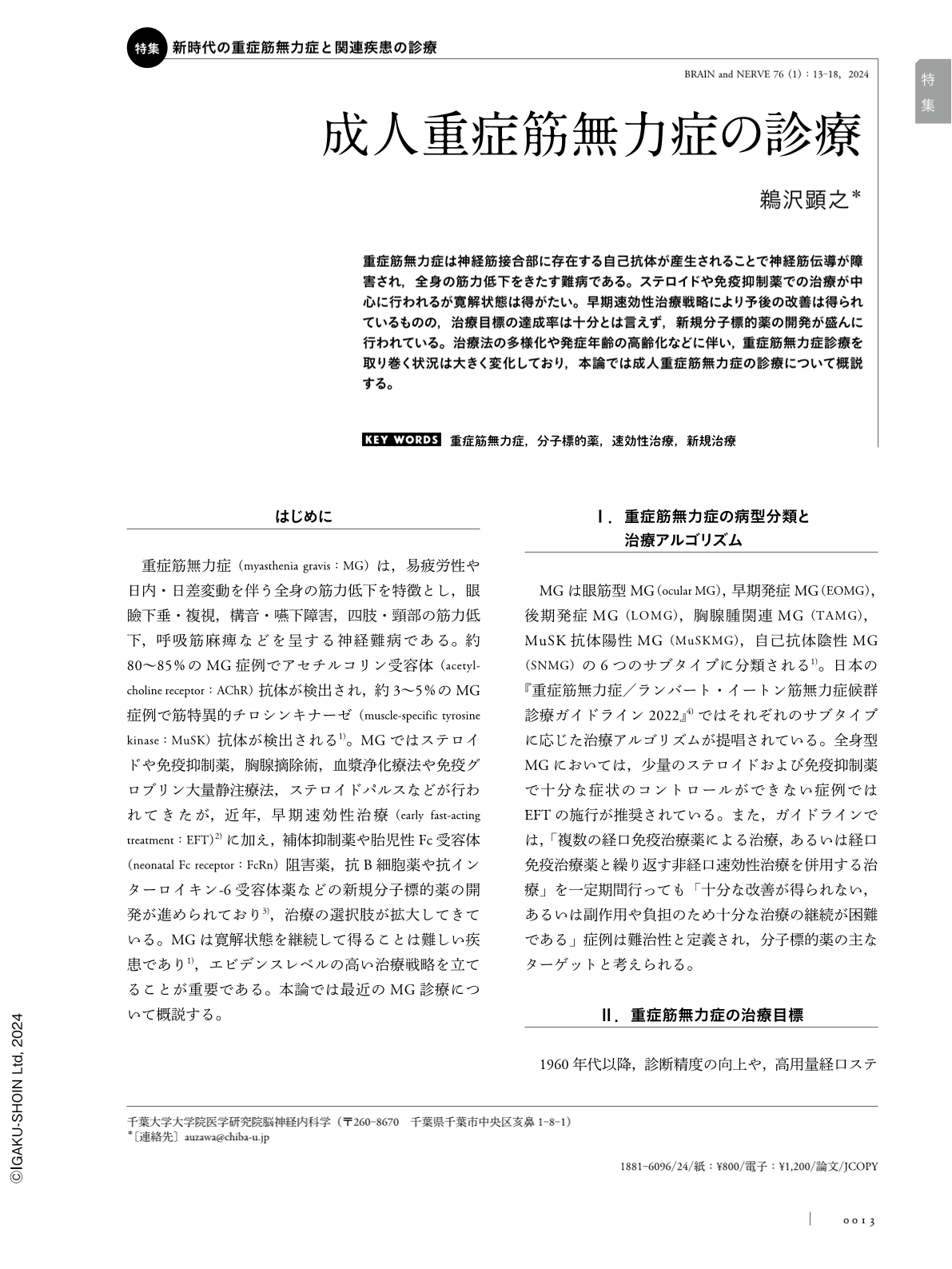Japanese
English
- 有料閲覧
- Abstract 文献概要
- 1ページ目 Look Inside
- 参考文献 Reference
重症筋無力症は神経筋接合部に存在する自己抗体が産生されることで神経筋伝導が障害され,全身の筋力低下をきたす難病である。ステロイドや免疫抑制薬での治療が中心に行われるが寛解状態は得がたい。早期速効性治療戦略により予後の改善は得られているものの,治療目標の達成率は十分とは言えず,新規分子標的薬の開発が盛んに行われている。治療法の多様化や発症年齢の高齢化などに伴い,重症筋無力症診療を取り巻く状況は大きく変化しており,本論では成人重症筋無力症の診療について概説する。
Abstract
Myasthenia gravis (MG), an intractable disease characterized by the production of autoantibodies against neuromuscular junction proteins, causes generalized muscle weakness. Treatment usually includes administration of steroids and immunosuppressants; however, it is difficult to achieve remission. Disease suppression and achieving the treatment goal in the early stages of MG may lead to improved long-term prognosis. In cases refractory to conventional treatments, early institution of fast-acting treatment, including intravenously administered high-dose methylprednisolone and biological treatments, is important to suppress disease activity. Following the availability of a variety of treatments and the increasing incidence of MG in the aging population, the scenario of MG treatments has changed significantly. In this study, we review the various treatment strategies and management of MG in adults.

Copyright © 2024, Igaku-Shoin Ltd. All rights reserved.


